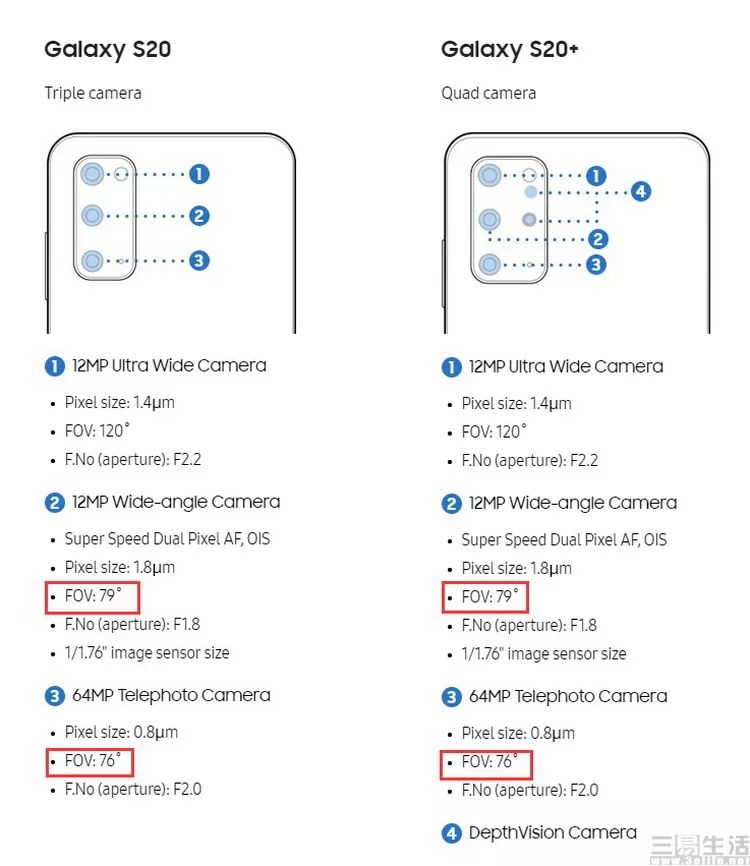For today’s mobile phone camera functions, algorithms and optimizations may be more important.
Editor’s note: This article is from WeChat public account “Three Easy Life” (ID: IT-3eLife) , Authors Trichomonas.
In the early morning of February 12, 2020, as the first flagship model officially unveiled this year, the Samsung Galaxy S20 series arrived on schedule. At that time, our Sanyi Life had analyzed the product information of this new Android emperor and the content not mentioned at the press conference. However, we must admit that I was negligent at the time and did not notice a bold or even controversial design adopted by Samsung on the Galaxy S20 and Galaxy S20 +.
-
Lens parameters leaked, flagship phone emperor uses “false optical zoom”?
The first thing that noticed the special design of the Galaxy S20 and Galaxy S20 + cameras was the German editor of NotebookCheck, an overseas technology media. In the product parameter page of Samsung’s official website, he found such an unusual detail:
Samsung China has not yet launched the S20 parameter page. Screenshots are from the English official website.
It shows that among the multi-shot parameters of the Galaxy S20 and Galaxy S20 + models, the field of view (FOV) of the “Wide-angle Camera” and the “Telephoto Camera” ) “Are very close. What does this mean?
Simply speaking, for any camera lens, there is a formula that can be directly converted between the angle of view, frame and focal length, v = 2 × arc tan ((L / 2) / f), Where v is the field angle, L is the frame, and f is the focal length. Since the 12-megapixel and 64-megapixel telephoto CMOS sizes of the Galaxy S20 and Galaxy S20 + are the same 1 / 1.7 inch, it can be concluded that their actual focal lengths are 26mm and 2The focal length of the Wanda sub-photographer will reach an equivalent of 52mm. At this time, its camera angle of view will be severely limited, and the 8K camera experience will also be greatly reduced. Obviously, as long as Samsung’s own zoom algorithm is powerful enough, canceling the traditional double focal length lens design is actually a new idea of technological innovation.
Not only that, considering Samsung ’s special identity as both a supplier and a competitor in the entire smartphone camp, the design of this special zoom camera on the Galaxy S20 and Galaxy S20 + is likely to be one. The demonstration of this new scheme, and even the preview of further “light optics, heavy algorithm” in the future industry. If so, it may actually be a good thing for cell phone images that are both thin and light and perform well.
